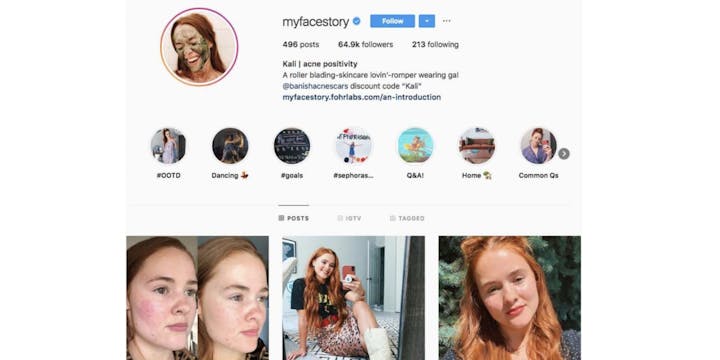3 X NEW RULES FOR TARGETING GEN Z THROUGH INFLUENCERS
Currently estimated at two billion people globally, Gen Z is destined to become the single largest group of consumers in just a few years. We thought we’d break things down and share some truths about using influencers in your Gen Z marketing strategies.
The demographic as a whole is shaped by the common factors of their upbringing. This is a generation defined by technology, cultural aggregation, fluidity, and contradiction. However, rather than speaking broadly to Gen Z, there are two different segments you can tap into: ‘Gen Me’ and ‘Gen We’.
Representing most Gen Z consumers, Gen Me care about issues facing the world, but they choose to escape from the noise rather than face or vocalise their feelings.
Gen We, however, prefer to view their own circumstances through an unfiltered lens. This group refuses to escape from reality, instead opting to face their problems or embrace their vulnerabilities and imperfections.
With this in mind, here are three new rules for a winning influencer strategy.

1. SIZE DOESN’T MATTER
There is no longer a single influencer leading the pack across various consumer industries. Instead, Gen Z look to multiple networks and relatable peers for inspiration, advice and recommendations.
And while Gen Me look up to macro-influencers - those with huge follower figures - Gen We respond to influencers with a smaller, more refined following (micro-influencers). For them, it’s not about competition, but collaborations that reign supreme.
Last year, adidas broke the assumption that macro-influencers work harder than micro by introducing the ‘Tango Squads’ programme. This move saw the brand partner with young footballers who had a small social following, giving them access to exclusive content and events to help them grow their social media reach.
By working with a squad of micro-influencers from the ground up, adidas drove more authentic brand connections and longevity.
2. CREDIBILITY MUST BE EARNED
There’s a growing conception that influencer marketing has reached its peak. This is largely due to the saturation of “insta-famous” personalities who advocate competing brands in the same sector on the same day, with regurgitated lines like “I just love this product” or multiple #spon #ad #affiliate posts in their feed.
Gen Z sense this lack of loyalty a mile off, instead opting to follow influencers who they think have earned their credibility. These are people with genuine skills, an established talent, an interesting point of view or those who are directly advocating change.
One example is cosmetics influencer Kali, known on Instagram as @myfacestory, whose 64.7K following has grown from her authentic approach. The 22-year-old initially made headlines by posting progress shots of her cystic acne treatment.

Image Credit: @myfacestory
Kali uses her account to show a real person coping with acne and its effects on her wellbeing. She now collaborates with brands, yet undoubtedly only those she genuinely believes in, uses herself or feels comfortable recommending to her following.
3. KEEP IT REAL
We’re seeing a growing reaction against the hyper-curated style that came before. The millennial pink aesthetic that arrived with the first wave of Instagram influencers is at least four years old now. In digital terms, that’s a lifetime.

The topic of burnout also became a huge talking point in 2017, with multiple influencers coming forward about their struggles with mental health. At this point, a rebellion against the idea of perfection and fake, hyper-produced personalities built momentum, with Gen Z instead opting to engage with people who felt more “real”.
One person leading this shift is YouTuber Emma Chamberlain, who has earned the title of “most talked-about teen influencer in the world”.

Image Credit: Elle
Her lo-fi vlogs - often filmed on her phone with little prep - coupled with her decision to ditch a team of editors and photographers to capture the typical “plandid" shot, has helped her following reach 8.3 million on YouTube and eight million on Instagram @_emmachamberlain.
3x3 has been compiled by LOVE's Culture & Strategy team. Want to say hello, ask questions or question their cultural knowledge? Throw an email over to hello@lovecreative.com.